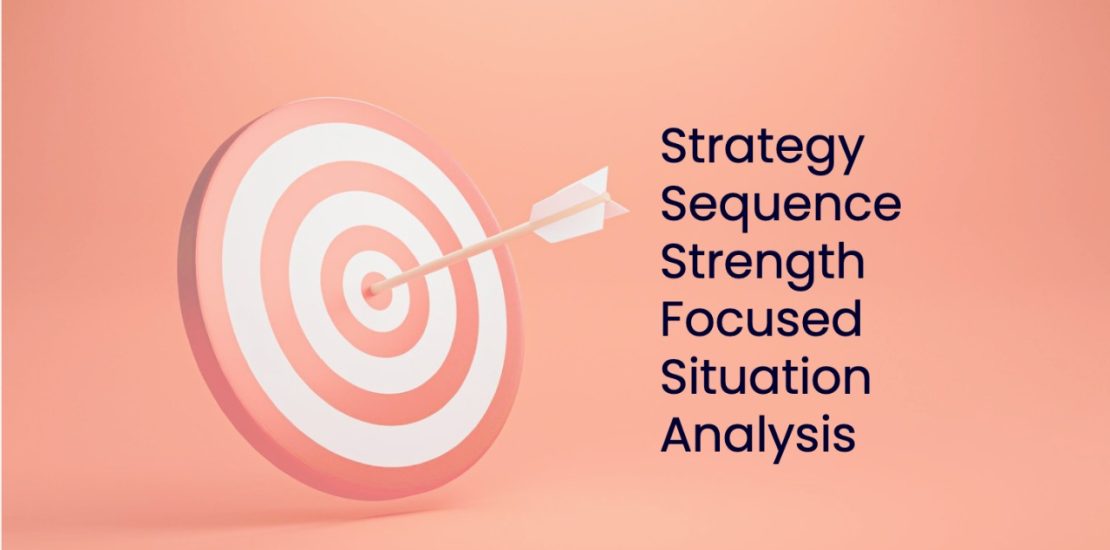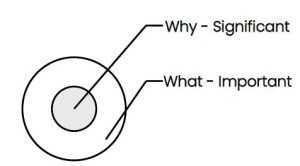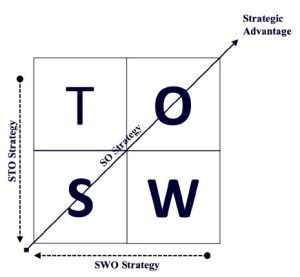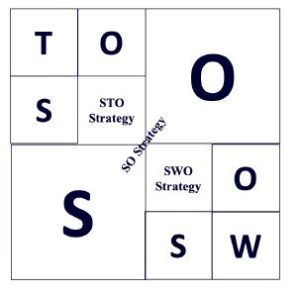Strategy Sequence Strength Focused Situation Analysis
- August 12, 2022
- Posted by: admin
- Category: Strategic Management

Introduction to Strategic Sequence Strength Focused Situational Analysis
Researchers in strategic management (Ansoff, 1965; Andrews, 1987; Porter, 1991; and Mintzberg et al., 1998) agree SWOT analysis provides the foundation for realization of the desired alignment of organizational variables or issues. By listing favourable, challenging and ground breaking internal and external issues in the four quadrants of a SWOT analysis grid, planners can better understand how to leverage strengths to match opportunities, realise and create new opportunities, understand how weaknesses can slow down the progress or magnify organizational threats. In addition, it is possible to postulate ways to overcome threats and weaknesses (e.g. Hofer and Schendel, 1978; Schnaars, 1998; McDonald, 1999; Kotler, 2000), or future strategies, from SWOT analysis.
Perspectives from the deficiencies of SWOT Analysis:
SWOT analysis can be a great tool to get leadership team focus on MBO. However, the notion of SWOT is somewhat elusive and, according to Pickton and Wright (1998), produces a superficial listing output that makes it dangerously simplistic in its structure. Kay (1993) agrees and further states that SWOT is simply a list. Therefore the author questions SWOT’s role and usage through some of the events put before the organisation which are considered truly a game changer.
- When the founder and thought leader of organisation retires
- When Apple Inc introduced an eco-system while industry’s focus was on functional utility of a product
- When luxury brands are required to drive economy of scale and still remain rare
- When domestic companies threatened by global giants (occasionally government plays formidable role to protect domestic players)
- When Tata Nano was launched capitalising on cost leadership
- When companies and products go thru rebranding and repositioning
- During product proliferation and geographic expansions
- During long Pandemic and war crisis
- Gen Z trends.
When organisations face such challenging times and situations, it is quite evident that
- Threats weakening the strength thereby organisations missing out on potential and new opportunities, Weakness becoming a threat – a disaster sequence in SWOT Analysis
- The internal and external factors never remain constant
- The avoidance of threat is quite unlikely
- Importantly organisations have more of most times deliver results based on Strengths.
Strategic Sequence Strength Focused Situational Analysis
The aim of the strategy is to reduce the level of surprise, to improve predictions and thus improve the ability of those who are at the top of the organization and control its long-term development (Buble, 1997). While discussing the strategic tool, the author emphasise that the existing tools could still remain relevant, and the usage of this tool is based on compatibility and strategic choice of the management. Dickson (2002) agrees the traditional SWOT analysis can be re-conceptualized in terms of the direction and momentum where the market can still be changed.
The SWOT Structure:
Strategy formulation is quite often referred to long range (strategic) planning, connected with organisation’s mission, objectives, strategic intent, core values and policies. The suggested SWOT Analysis contain 5 stages (fig. 1), author suggest these stages to achieve flawless outcome.
 Figure: 1
Figure: 1
Stage 1: Input Stage – SWOT Factors
Strengths:
– Vision, Strategic Mission and Objectives, Strategic Intent and Core Values.
– List of Key, Core, and Critical Competencies
– Strengths to optimise and convert opportunities
– Strengths to expand opportunities
– Strengths to create new opportunities
– Strengths to overcome weaknesses and Threats
Weaknesses:
– Weaknesses with low impact – here the weaknesses are not connected with other three factors, strengths, opportunities and threats but posing threat if ignored, however the weaknesses area should be addressed through organic and or inorganic efforts to ensure zero impact to the organisation.
– Weaknesses with medium impact – here weaknesses are directly connected to the strength which would affect performance of the organisation that would hamper existing and potential opportunities.
– Weaknesses with high impact – considered severe and concerning, which would require immediate and all out efforts of the management, else eventually be a threat to the organisation.
Opportunities:
– Existing opportunities
– Enhanced opportunities
– Expanded opportunities
– New opportunities
Threats
Internal: Weakness invading opportunities and deteriorating strengths
External: Competitors, Substitutes, Consumers and Environment
Stage 2: Validation Stage

Figure: 2
Based on Statistical Significance (Why) and Practical Importance (What) as mentioned (fig. 2), the factors should be selected. Though How and When are important factors continue to play vital roles in strategic management process, author consider these two factors should be part of planning process. The strategy analysis involves making subjective decisions based on objective information. The idea is not to consider all factors that could benefit or harm the organisation because there are an infinite number of possible factors and an infinite number of ways these factors could impact the organisation. Therefore, a manageable set of most significant and important factors must be developed, examined, prioritized and selected.
Stage 3: Sequencing Stage – Methodological Framework
The integrated value of Strategy Sequence would enhance clarity of the strategy thinking and visibility of focus area. The suggested approach is
- Strength based approach, seeing through all the available and potential Opportunities through the existing Strengths, this gives an advantage of continual and continuous improvement to handle relevant opportunities available in the market space, from local to global.
- Convert Weakness and Threats to Organisation’s Strength, and handle the Opportunity, with parallel focus on competitive advantage.
This approach would lead to 3 strategies (SO, WSO, TSO) in success sequence (fig. 3), strength focused situational analysis.

Figure: 3
Strategy Sequencing:
SO Strategy – to use organisation’s key, core, and critical strengths to take advantage of market opportunities and trends.
WSO Strategy – work towards improving the weaknesses, inorganically or
organically converted to Strengths as short and near long term goals to handle Opportunities, here the organisation could witness renewed and possibly enhanced opportunities as the corrected weaknesses would add to the strengths of the organisation.
TSO Strategy – Threats partially or fully converted to Strengths to handle opportunities.
Thereby the Strategic Sequenced SWOT Matrix would be a continual and continuous design in the Organisation Structure.
Stage 4: Matching Stage – SWOT Matrix

Figure: 4
The purpose of matching stage is to generate significant and viable strategic solutions for implementation (fig. 4), the organisation should plan the implementation based on capital and resources allocated. The effect of strategy sequence should significantly amplify the strengths of the organisation by providing directional support to specific strategic functions, business and organisation at large.
Stage 5: Evaluation Stage
The management assesses how well a chosen strategic sequence would lead the organisation to achieve competitive advantage (fig. 5).

Figure: 5
Strategic Choice: Seeing organisation’s view to better strategy. Viewing strategy choices through various lenses i.e. financial performance, markets, competitive advantage, operating model, etc. could help companies debias their strategic choices and make big, bold changes.
Strategic Implications: The Strategic Choice should be measured on the parameters namely Viability, Visibility, Vulnerability, 3Vs of Strategic Implications. Organisations would be able to analyse the implications thru 3Vs.
Strategic Position: To be unique, Strategic position reflects choices a company makes about the kind of value it will create and how that value will be created for its strengths and advantage.
Strategic Advantage: Is a position when an organisation develops vigor and outperforms the competition in the long term.
Usage and frequency:
Usage of this tool could be at autonomous functional level, business level and organizational level, depending on organisation’s requirement and
resources allocated. However the suggested directional tool could be used twice a year at functional and business level, once a year at organizational
level, and when the organisation initiates strategic management process, brand building strategies, geographic expansions, product and marketing
initiatives, positioning and repositioning strategies.
Limitations:
Contingency strategy couldn’t be factored as it moderates the effect of an organisational characteristics and performance.
Conclusion:
Strategy sequence strength focused situational analysis is a strategic lens through which the organisation structurally integrates its strategic management process. In the past we have seen many products failed to survive in evolving markets and consumer trends (film cameras, typewriters, video cassette recorders, telephones, fax machines, etc.), companies have been facing relentless pressure from substitutes and alternatives (decline in passenger air travel sales due to sporadic growth in virtual business meetings and conferences, high speed trains replacing air travel for short distances), big brands (Kingfisher) collapsed due to wrong moves and faulty decisions. A company with no competitive advantage and fading opportunities couldn’t be rescued by the directional tool, Strategy Sequence Strength Focused Situational Analysis, except indicating a complete revamp.
